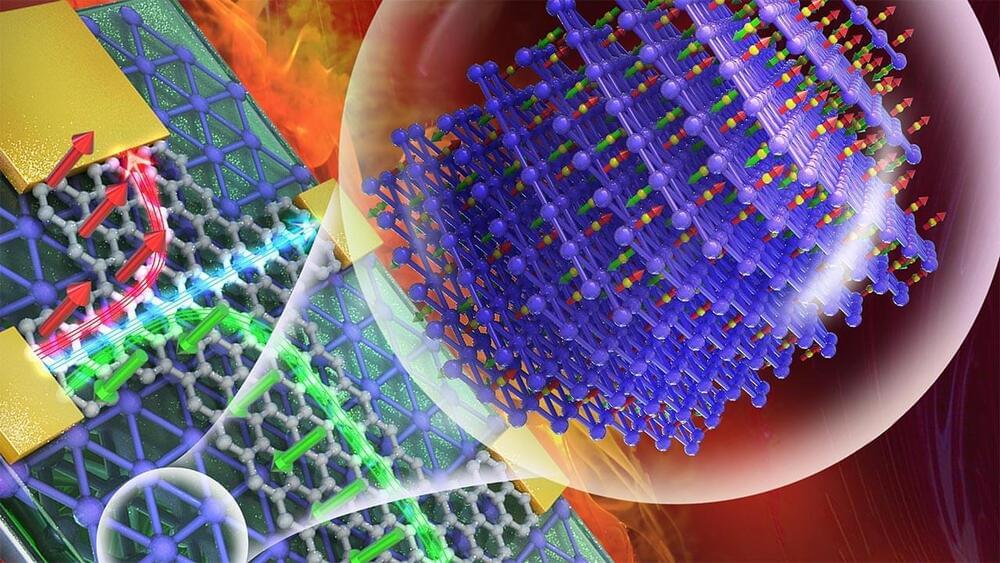In the sparse collection of atoms that fills interstellar space, Voyager 1 has measured a long-lasting series of waves where it previously only detected sporadic bursts.


Design also poised to save space, retain memory in event of power loss. A new spin on one of the 20th century’s smallest but grandest inventions, the transistor, could help feed the world’s ever-growing appetite for digital memory while slicing up to 5% of the energy from its power-hungry diet.

A new spin on one of the 20th century’s smallest but grandest inventions, the transistor, could help feed the world’s ever-growing appetite for digital memory while slicing up to 5% of the energy from its power-hungry diet.
Following years of innovations from the University of Nebraska–Lincoln’s Christian Binek and University at Buffalos Jonathan Bird and Keke He, the physicists recently teamed up to craft the first magneto-electric transistor.
Along with curbing the energy consumption of any microelectronics that incorporate it, the team’s design could reduce the number of transistors needed to store certain data by as much as 75%, said Nebraska physicist Peter Dowben, leading to smaller devices. It could also lend those microelectronics steel-trap memory that remembers exactly where its users leave off, even after being shut down or abruptly losing power.

Have you ever heard of the Scandinavian-Mediterranean Corridor? As the fifth of the Trans-European Transport Network’s nine priority axes, it is a critical path for the European economy.
It spans from Finland and Sweden in the north to the island of Malta in the south, passing through Denmark, Northern, Central, and Southern Germany, Northern Italy’s industrial areas, and southern Italian ports.
The Alpine mountain range between Munich and Verona, however, represents a major bottleneck for the corridor. The Brenner Base Rail tunnel is intended to solve this problem. It is scheduled to open in 2028 and seeks to reduce traffic while meeting the EU’s environmental goals for preserving the future of the environmentally vulnerable alpine region. If you want to understand more about the history and recent advancements of this gigantic project, be sure to watch the video by the YouTube channel The B1M posted above, and as always, enjoy!

Access to an online program that provides easily accessible, interactive, tailored healthy lifestyle and behavior change techniques is associated with better health-related quality of life among adult stroke survivors, according to new research from the University of Newcastle and Flinders University.
Stroke can lead to serious consequences for those that survive in terms of physical and cognitive disability. Improving lifestyle and health risk behaviors, including tobacco and alcohol use, physical activity, diet, depression, and anxiety, has the potential to significantly enhance stroke survivors’ quality of life.
Led by Dr. Ashleigh Guillaumier from the University of Newcastle and senior author Professor Billie Bonevski from Flinders University, the study, published in the journal PLOS Medicine, undertook a randomized control trial to evaluate the online program Prevent 2nd Stroke (P2S), which encourages users to set goals and monitor progress across various health risk areas.




The US government has detailed how North Korean state-sponsored attackers have been hacking cryptocurrency firms using phishing, malware and exploits to steal funds and initiate fraudulent blockchain transactions.
The Federal Bureau of Investigation (FBI), the Cybersecurity and Infrastructure Security Agency (CISA), and the U.S. Treasury Department (Treasury) have issued a joint cybersecurity advisory to warn all businesses in cryptocurrency to watch out for attacks from North Korean state-sponsored hackers.